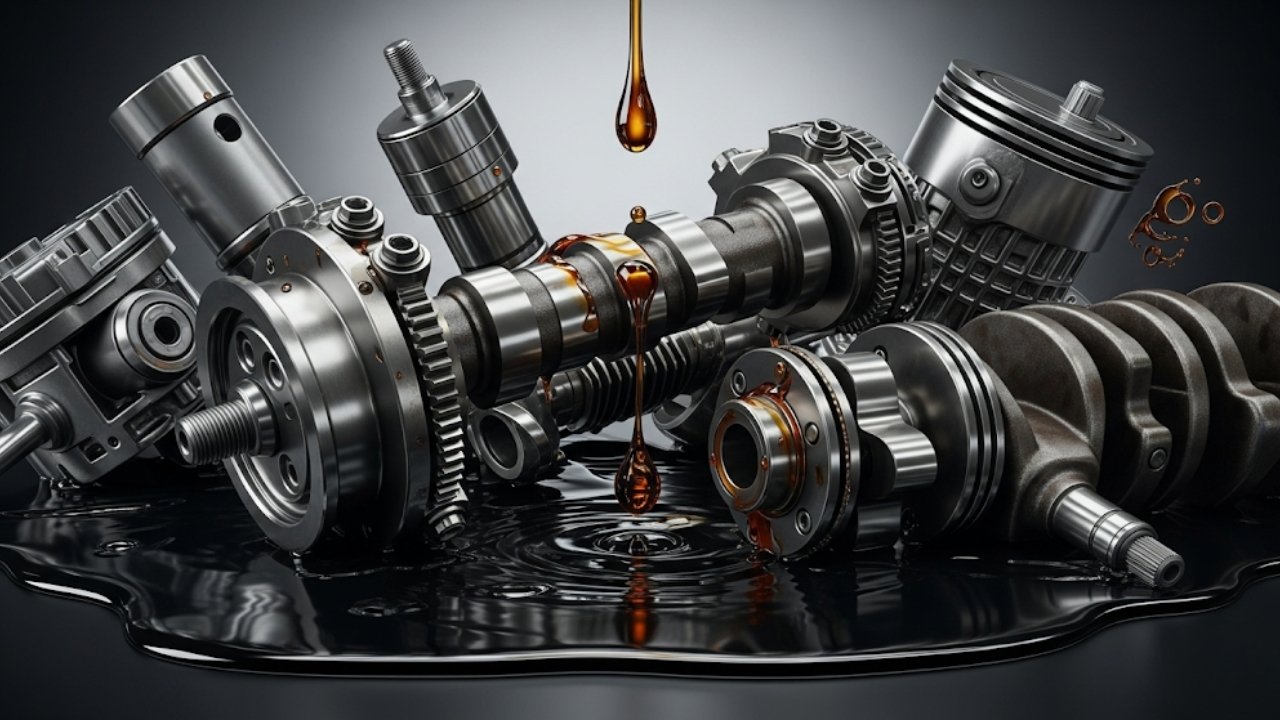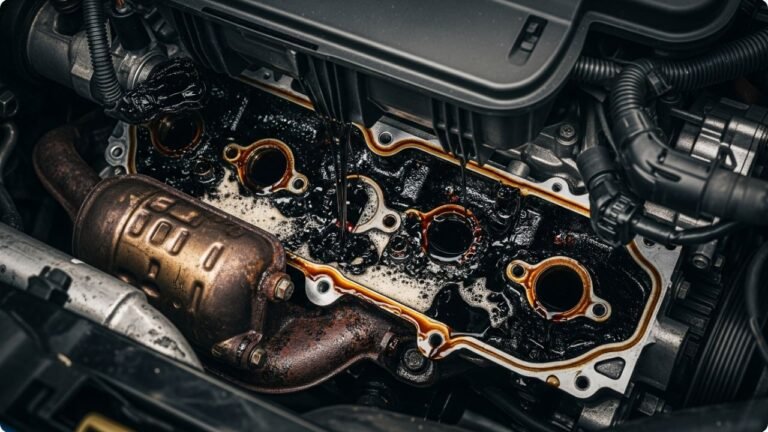Car Parts Engine Oil: The Lifeblood of Your Car’s Heart

If you’ve ever loved your car like family, you’ll understand this. Your car doesn’t just take you from point A to B—it carries your memories, your late-night drives, those long family road trips, and even the emergency runs to the pharmacy. And at the heart of all these stories? Engine oil. Yes, car parts engine oil might sound technical, even boring. But trust me, it’s the lifeblood of your vehicle’s engine.
Without the right engine oil, your car’s engine parts will grind, overheat, or even fail. Imagine running a marathon with no water in your system—same story. This article dives deep into the world of car parts engine oil, uncovering its importance, how it works, types available, and how to choose the best one for your beloved ride.
So grab a cup of tea or coffee—this will be an enlightening ride.
Why Engine Oil Matters in Car Parts: The Unsung Hero

Lubricates moving parts so they don’t wear out.
Cools the engine by reducing friction.
Cleans out debris and sludge.
Protects against corrosion.
Boosts performance and efficiency.
Every time you start your engine, there are thousands of metal parts moving at high speeds. Without car parts engine oil, they would crash, grind, and destroy each other. That soft purring sound of a healthy engine? That’s engine oil doing its job quietly.
Let me tell you a short story—my uncle once ignored changing his oil for a year. The result? Engine seized on a highway road trip. The repair cost more than the car’s value. Since then, I’ve made oil changes a ritual.
Main Components of Engine Oil: What’s Inside the Magic Potion?
Engine oil isn’t just “oil.” It’s a blend of base oil (around 70-90%) and additives (10-30%). These work together like a well-trained orchestra.
| Component | Purpose |
|---|---|
| Base Oil | Lubrication, heat transfer |
| Detergents | Keeps parts clean |
| Dispersants | Prevent sludge build-up |
| Anti-wear Agents | Protect metal surfaces |
| Friction Modifiers | Boost fuel economy |
| Viscosity Modifiers | Stabilize thickness across temperatures |
The additives are what make modern engine oil so powerful. It’s no longer just thick goo—it’s smart fluid engineering in a bottle.
Types of Car Parts Engine Oil: Know Before You Pour
Here’s where many car owners get confused. There’s synthetic, semi-synthetic, conventional, and high-mileage oil. Let’s break it down:
1. Conventional Engine Oil
This is your basic oil. It’s made from crude oil and best for older cars or simple engines. Affordable but breaks down faster.
2. Synthetic Engine Oil
Fully man-made in labs. Offers better protection, lasts longer, and flows better in extreme cold or heat. It’s ideal for modern engines.
3. Semi-Synthetic Oil
A blend of the above. Good balance of price and performance. Many budget-conscious owners choose this.
4. High-Mileage Oil
Specifically made for cars with 75,000+ miles. It has seal conditioners to prevent leaks in older engines.
Tip: If you’re unsure which to pick, always check your car’s owner’s manual. It’s like the health book of your vehicle.
Viscosity: The Engine Oil Language You Must Learn
Ever seen numbers like 10W-30 or 5W-40 on your oil bottle? That’s viscosity rating—the oil’s thickness.
The W stands for Winter.
Lower number before W = better flow in cold.
Higher number after W = thicker in heat.
So 5W-30 flows better in cold starts and still protects in heat. Perfect for most climates.
Imagine trying to run honey through a straw in the cold. That’s what thick oil does to your engine if not matched correctly.
How Engine Oil Interacts with Other Car Parts
Here’s the fun part. Car parts engine oil isn’t working alone. It’s interconnected with many parts:
Oil Filter: Traps dirt, carbon, and metal bits.
Oil Pump: Circulates oil to all parts of the engine.
Piston Rings: Need lubrication to seal combustion properly.
Crankshaft & Camshaft: Spin like mad and rely on oil to avoid melting.
Valves & Rockers: Need smooth action; oil makes it happen.
One weak link—like a dirty filter or poor-quality oil—and it’s a domino effect. That’s why using quality engine oil matters.
When to Change Engine Oil: Don’t Play Guesswork
Most people follow the old-school 3,000 miles rule. But cars have changed. Now, depending on oil type and driving habits:
Synthetic oil: Change every 7,500 to 10,000 miles
Conventional oil: Change every 3,000 to 5,000 miles
High mileage oil: Depends, but every 6,000 miles is safe.
If you often drive in traffic, in dust, or at high speeds, shorten the gap. Watch for signs too:
Engine noise
Oil light on dashboard
Dark or gritty oil on dipstick
Burnt smell from engine
Changing oil on time is like drinking water before you’re dehydrated. Prevention > cure.
DIY vs Mechanic: Should You Change Engine Oil Yourself?
Changing oil can feel like a rite of passage for car lovers. And it’s doable at home:
DIY Benefits:
Save money
Learn your car better
Sense of accomplishment
DIY Downsides:
Messy
Need proper tools
You must dispose of used oil legally
If you’re unsure, visit a trusted mechanic. Just make sure they use the right type of oil and a quality oil filter. Don’t cheap out—your engine deserves the best.
Benefits of Using the Right Engine Oil
Let’s sum up why choosing the right engine oil is crucial:
Boosts fuel economy
Extends engine life
Prevents overheating
Cleans internal parts
Reduces emissions
Quieter, smoother ride
Improves resale value
Each of these has real-life savings and peace of mind tied to it. It’s not just oil—it’s long-term protection.
Common Mistakes People Make with Car Parts Engine Oil
Even experienced car owners sometimes get it wrong. Let’s go over some of the most common mistakes that hurt your engine silently over time:
1. Using the Wrong Oil Type
This is huge. Not all engines need the same kind of oil. Using thick oil in a cold climate, or thin oil in a hot climate, messes up the lubrication process. Always go with what’s recommended in the owner’s manual.
2. Ignoring Oil Change Intervals
Just because your car “feels fine” doesn’t mean it’s healthy. Skipping scheduled oil changes means sludge buildup, friction damage, and lower fuel economy.
3. Overfilling Engine Oil
Too much oil can cause foaming or pressure issues inside the engine. That leads to leaks, bad seals, or even oil getting into the combustion chamber. Always check the dipstick level.
4. Not Changing the Oil Filter
Your oil filter captures the dirt and metal bits. Keeping the same filter for multiple oil changes? That’s like using the same dirty towel after every shower.
Cultural Stories and Car Oil: How We Connect Emotionally with Our Cars
In many countries—including Bangladesh, India, and the U.S.—the relationship with cars goes beyond just machinery. People bless their cars, name them, or treat them like family. In my family, we called our car “Kalo Bhoot” (Black Ghost) because of how smooth it ran after every oil change.
There’s this sense of ritual when you check your oil, pop the hood, smell the warmth of the engine—almost like checking your child’s health. Many elders even say, “Engine oil should be changed before it asks for help.”
That emotional bond makes car parts engine oil more than just maintenance—it’s part of your car’s soul care.
Pro Tips for Engine Longevity with the Right Engine Oil
If you’re passionate about your car and want to see it last past 200,000 miles, here are some expert-backed tips:
Warm up your engine a little before heavy driving. Cold oil doesn’t flow well.
Never mix oil types unless it’s an emergency.
Use oil additives carefully—only if recommended.
In older cars, consider high-mileage oil with seal conditioners.
Change oil before long trips, not after.
Remember: preventive care is always cheaper than engine replacement.
Environmental Impact of Engine Oil: Be a Responsible Owner
Used engine oil is hazardous waste. Just one liter can contaminate 1 million liters of fresh water if dumped in soil or drains. That’s terrifying.
How to Dispose Used Oil Responsibly:
Take it to a certified oil recycling center.
Most gas stations or service centers will accept it.
Never mix it with other fluids or household trash.
Some companies even re-refine used oil into fresh lubricants. That’s recycling at its best.
Being mindful here doesn’t just protect the Earth—it sets an example for others in your community.
Frequently Asked Questions (FAQs)
1. Can I use motorcycle oil in my car?
No. Motorcycle oil has different additives for wet clutch systems and may damage car engine parts.
2. How do I check engine oil?
Use the dipstick: Pull it out, wipe clean, dip again, and read the level. Check color and smell too.
3. What happens if I drive without engine oil?
The engine will overheat, seize, and get permanently damaged—often within minutes.
4. Does engine oil expire?
Yes, over time oil can degrade in storage. Check the expiration on sealed bottles—usually 3–5 years.
5. Can I top off engine oil instead of changing it?
Topping off is fine if you’re low, but it doesn’t replace the need for full oil changes.
6. Can synthetic oil damage my engine?
No. Synthetic oil is actually better for most engines—more stable, cleaner, and longer-lasting.
7. Is darker oil always bad?
Not necessarily. Oil darkens as it cleans your engine. But if it’s gritty or smells burnt, it’s time to change.
8. How much does an oil change cost?
Depends on oil type. Conventional: $30–$50. Synthetic: $60–$100. Do-it-yourself: even less.
Final Thoughts: Treat Your Engine Like a Heart, Not a Machine
When you take care of your car’s engine oil, you’re not just preserving metal parts—you’re preserving stories. You’re avoiding roadside breakdowns, long repair bills, and those helpless moments when the engine light flashes and you don’t know why.
Car parts engine oil may not seem exciting, but it’s the small detail that keeps the entire system alive. Whether you’re a first-time car owner or a seasoned driver, respect this golden fluid. Your car will thank you with every smooth ride.






